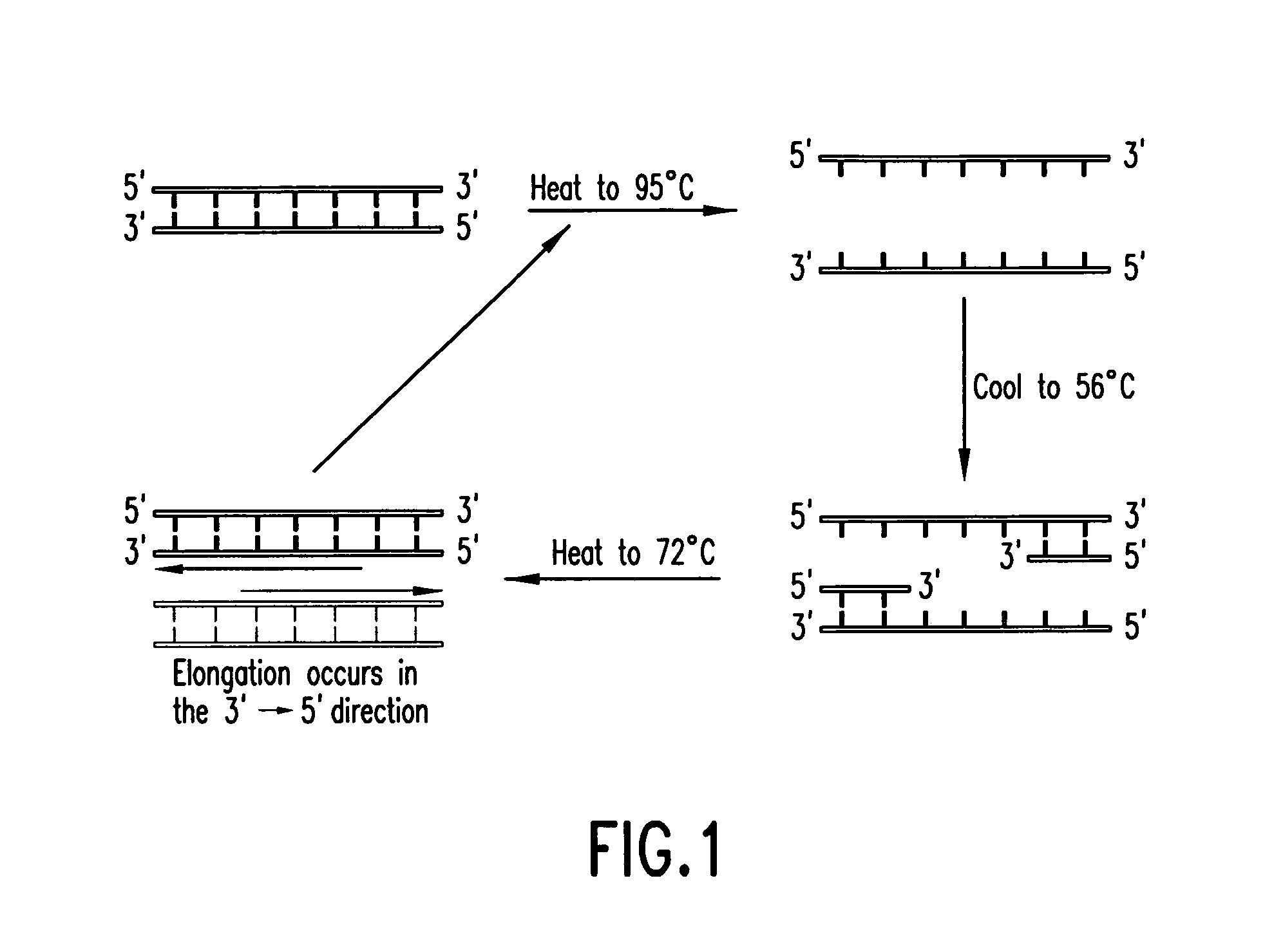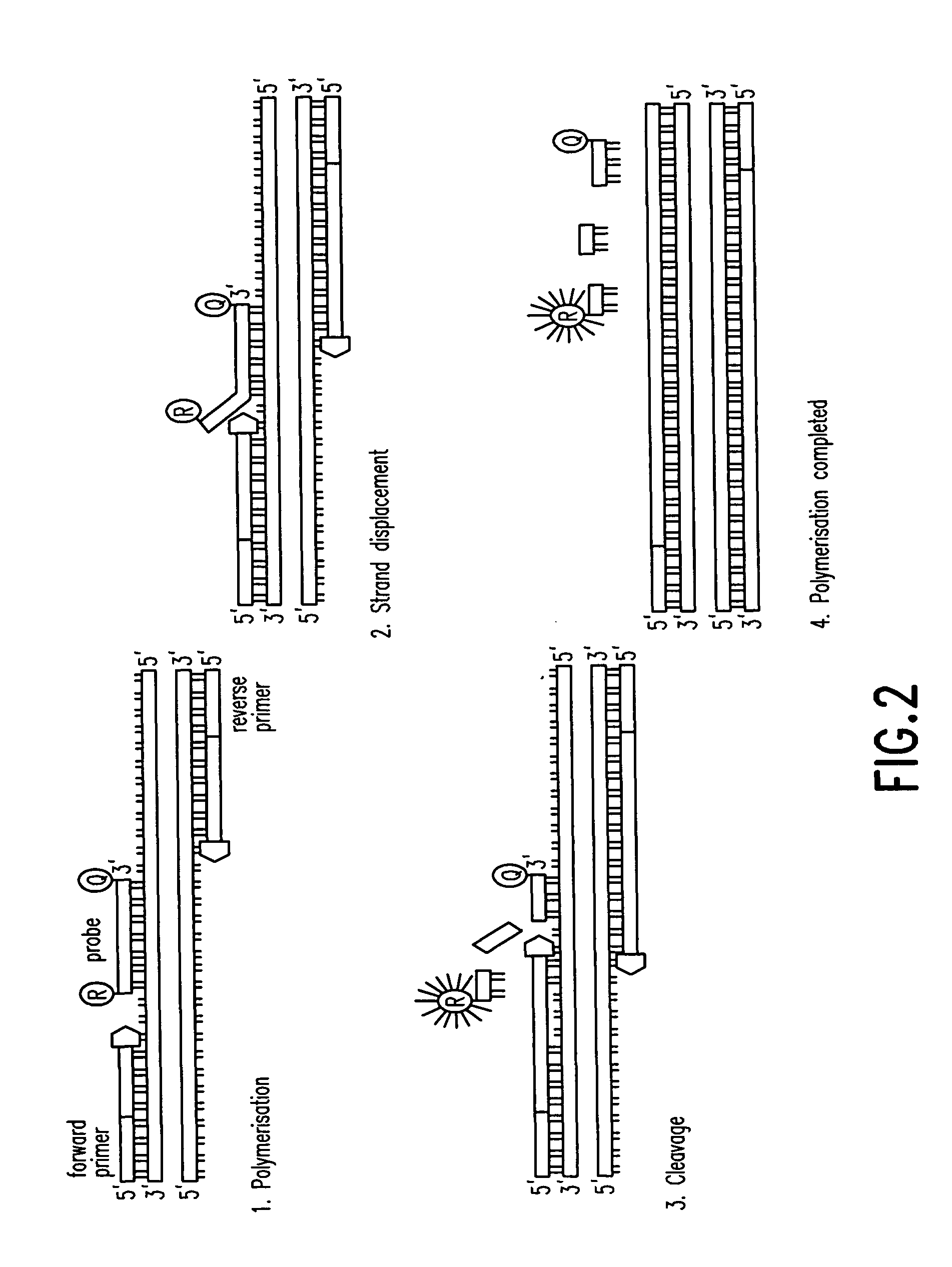Methods for detecting Venezuelan equine encephalitis virus TC-83 and its use as a biological agent simulant
- Summary
- Abstract
- Description
- Claims
- Application Information
AI Technical Summary
Benefits of technology
Problems solved by technology
Method used
Image
Examples
example 1
Detection By PCR
[0050]Sequences from the whole genome sequence of VEE strain TC-83 (GenBank accession number L01443) were used to develop assays for the specific detection of VEE strain TC-83. Candidate probe and primer sequences were designed with Primer Express 2.0 software (Applied Biosystems, Foster City, Calif.). Primer sequences were analyzed for specificity by comparison with known gene sequences by using the National Center for Biotechnology Information GenBank database with the BLAST search tool. The oligonucleotide primer and probe sets selected are as follows:
[0051]Forward primer 1:
[0052][SEQ ID NUMBER:1] 5′-CATGAGGCACATCTTGGAGAGA-3′
[0053]Reverse primer 1:
[0054][SEQ ID NUMBER:2] 5′-CCCAACACACGTTTGCCTTA-3′
[0055]Probe sequence 1:
[0056][SEQ ID NUMBER:3] 5′-[FAM]-CGGACCCTACCGACGTCTTCCAGA-[TAMRA]-3′
[0057]Forward primer 2:
[0058][SEQ ID NUMBER:4] 5′-CACCTCGTGGCTTGATAAAGG-3′
[0059]Reverse primer 2:
[0060][SEQ ID NUMBER:5] 5′-CGGAGAAAGCACAGCGTAAGA-3′
[0061]Probe sequence 2:
[0062][SEQ...
example 2
Detection by Nucleic Acid Hybridization
[0065]In addition to PCR, other methods based on the use of complementary nucleic acid probe sequences can be used in the present invention to detect the presence of TC-83 genomic RNA. Such methods include but are not limited to Northern blotting, in which nucleic acids in a sample are digested with restriction endonucleases and separated by electrophoresis in an agarose gel. The restriction fragments so generated are transferred to a nylon membrane by blotting. A probe consisting of nucleic acids complementary to TC-83 nucleic acid sequences is labeled with radioisotopes or a small molecule (such as digoxigenin) or other labels. The labeled probe is placed with the blot in solution that permits the probe to hybridize specifically with complementary TC-83 genomic RNA sequences, if present on the blot. After hybridization, unbound probe is washed away, and the presence of bound probe (indicative of the presence of VEE strain TC-83 genomic RNA in...
PUM
 Login to View More
Login to View More Abstract
Description
Claims
Application Information
 Login to View More
Login to View More - R&D
- Intellectual Property
- Life Sciences
- Materials
- Tech Scout
- Unparalleled Data Quality
- Higher Quality Content
- 60% Fewer Hallucinations
Browse by: Latest US Patents, China's latest patents, Technical Efficacy Thesaurus, Application Domain, Technology Topic, Popular Technical Reports.
© 2025 PatSnap. All rights reserved.Legal|Privacy policy|Modern Slavery Act Transparency Statement|Sitemap|About US| Contact US: help@patsnap.com


